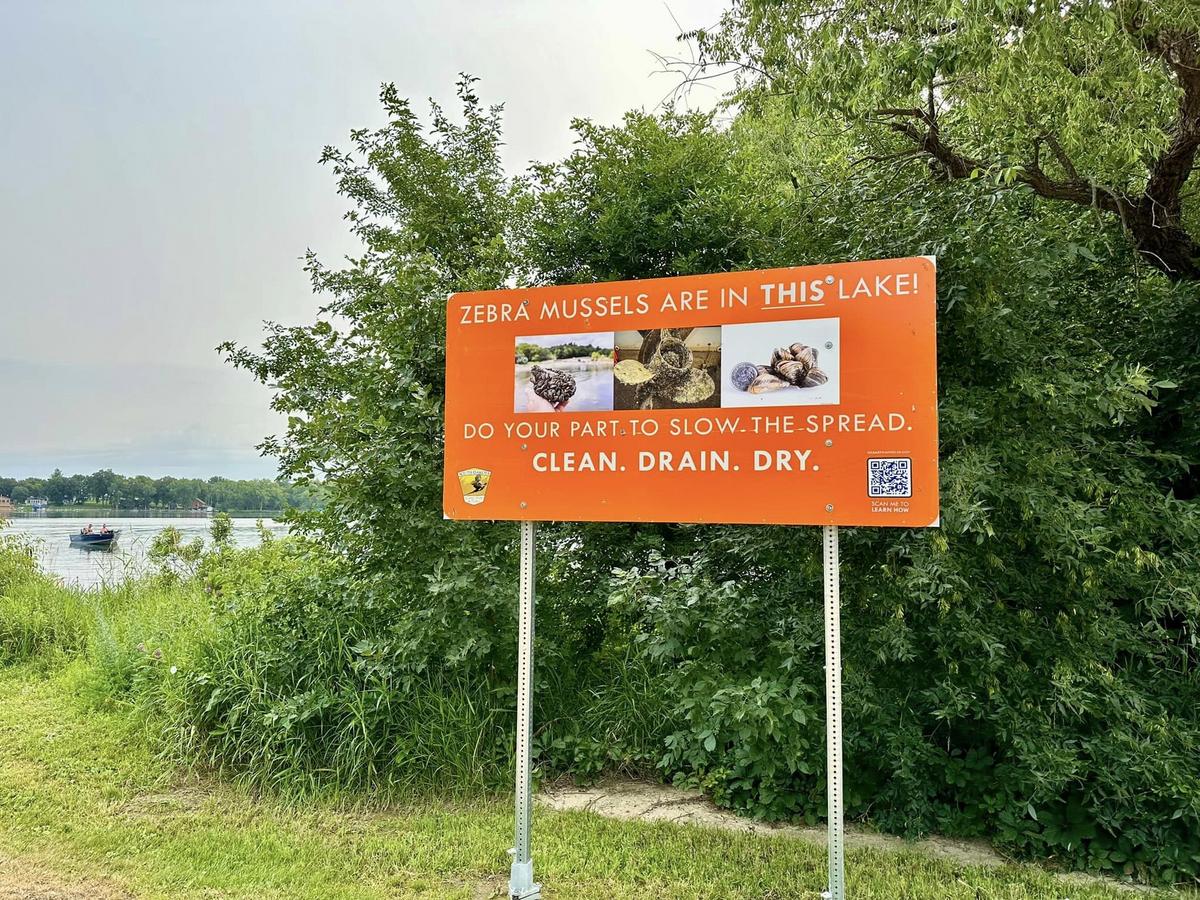North Dakota
Mike Jacobs Always in Season: Curlews forsake the valley, but hang on elsewhere in North Dakota

Contributed/Tom Stromme
GRAND FORKS – A long-billed curlew jumped out of my mailbox last week – not the bird itself, of course. Long-billed curlews haven’t been seen in Grand Forks County in 100 years.
This was a picture of the bird. The curlew is the cover model for this month’s issue of North Dakota Outdoors. The magazine is published by the North Dakota Game and Fish Department, and this issue is testimony to the department’s increasing interest in wildlife that isn’t hunted.
The well-publicized “Meadowlark Initiative” is another aimed at the iconic state bird, the western meadowlark, whose populations are decreasing across much of the state.
The curlew was a game bird in settlement days. Theodore Roosevelt hunted curlew during his sojourn in the Badlands of Dakota Territory in the 1880s. He pronounced them “very good eating.”
Long-billed curlews haven’t been seen in Grand Forks County in 100 years. The last nesting record I found was in Robert W. Stewart’s “Birds of North Dakota,” which was published in 1975. A pair of curlews nested near Ardoch, which isn’t too far outside Grand Forks County, in 1923.
Long-billed curlews were numerous in Minnesota, too. In 1885, F.L. Washburn wrote, “Only a few individuals observed. I was informed by sportsmen at Ada that it was not present this year where it was extremely abundant last year. The bird was spoken of familiarly at Georgetown and a few were shot near Crookston and Ada.”
This report I found in Thomas Roberts’ two-volume tome entitled “The Birds of Minnesota.”
These reports are not surprising. The long-billed curlew prefers short-grass prairies on sandy soils, conditions prevalent on the beach ridges of Glacial Lake Agassiz. These ridges mark the boundaries of what we now call the Red River Valley.
The birds were driven away by rapidly expanding settlement and advancing agriculture.
Today, long-billed curlews are considered “a species of concern” in North Dakota.
Some have persisted in North Dakota. I discovered a likely curlew nesting area in Billings County, just west of Theodore Roosevelt National Park, and that’s where I would go if I wanted to see a long-billed curlew – although the frantic pace of oil development might have driven the birds away.
A research team from Boise State University’s Intermountain Bird Observatory in Idaho had the same idea. They captured and banded five curlews in southwestern North Dakota and attached tracking devices. Two of them returned to the same nesting areas the following year.
The researchers intend to follow the birds at least through this nesting season and into next year.
The report in North Dakota Outdoors reports the wanderings of several curlews. It turns out they spend only a short time in North Dakota, from late March to early July. Their winter quarters are in Mexico.
The long-billed curlew is technically a “shorebird,” closely related to the snipes and other so-called “waders.” Like the snipes, the curlews like grass. Snipe – fairly common in Grand Forks County – nest in rank, damp grasslands. Curlews prefer drier sites.
The other grassland “shorebirds” – including godwits – are showy birds, but the curlew takes the prize. It is the largest of these so-called “shorebirds,” which of course made them tempting targets both for sportsmen and market hunters.
This is an unmistakable bird. The bill is nearly as long as the body, and it curves down dramatically, making it an ideal tool for probing Mexican mudflats or North Dakota sand prairies.
In color, curlews are buff overall, but heavily marked with darker brown – an ideal camouflage in a dry prairie.
The intense heat discourages birding, and last week’s wind only added to our lethargy. Suezette and I spent some time watching dragonflies coursing over the lawn and garden – and returning to the same perch.
Other than that, crows, chickadees, woodpeckers and an occasional hawk pretty much run out of list of sightings.
Oh, and the chipping sparrows, a likely candidate for next week’s title of “Bird of the Week.”
Jacobs is a retired publisher and editor of the Herald. Reach him at mjacobs@polarcomm.com.

North Dakota
Zebra Mussels In North Dakota Lakes: Will It Really Be That Bad?

Zebra mussels are going to ruin all of our lakes right?
Okay, I know I’m going to take some heat on this, but here goes. We’ve been hearing about zebra mussels for a long time now. How they will destroy ecosystems, ruin beaches, clog up water intakes, compete with native species, etc.
You’ve seen the commercials and billboards from North Dakota Game and Fish, “Clean, Drain and Inspect.” Zebra mussels are a problem, but is it really all doom and gloom? More on that in a moment.
Zebra mussels are now in several North Dakota lakes and rivers, and you can bet more will be added in the future.
They include the Red River, Lake LaMoure, Lake Ashtabula, Lake Elsie, the James River, and the Sheyenne River all in eastern North Dakota.
So far western North Dakota has been spared, but you can bet zebra mussels are coming. Here’s a map and more on ANS-infested waters in North Dakota.
Humans are considered the primary transporter of zebra mussels, but there are other spreaders. According to Researchgate, waterfowl can transfer zebra mussels at the larvae stage.
What are we going to do about millions of migrating waterfowl each year? Not to mention other shorebirds, reptiles, and even mammals.
I’m very familiar with zebra mussels. I have a cabin on Enemy Swim Lake in northeast South Dakota. We’ve had zebra mussels present in the lake now going on for 3 years.
(A very small zebra mussel that was found on our beach this past weekend.)
Enemy Swim is located about 5 miles south of Pickerel Lake in South Dakota. Pickerel Lake has had zebra mussels for a few years longer than my lake.
Despite joint efforts from Fish and Game, cabin owner volunteers, and interns from Fish and Game with inspection points at the boat ramp, zebra mussels still found their way into my lake. I know we all did our part to prevent it, but I sometimes think that eventually, nature will take its course.
Will zebra mussels really ruin a lake?
There’s a lot of big claims and theories out there. No doubt it will affect your beach life. You will have to wear water shoes because zebra muscles can be sharp and could cut your feet. I know I swim with my water shoes normally anyway, as I don’t like creepy crawlies touching my feet in the water.
Will zebra mussels cause your lake property values to crash?
To be honest, no sign of that anywhere. Much of Minnesota’s lakes are infested with zebra mussels. People are still spending millions of dollars for cabins on Minnetonka, Pelican, or Detroit Lakes area lakes.
Even Pickerel Lake, next to my lake has people snatching up some very expensive million-dollar cabins. You can’t even find a cabin for sale on my lake. According to swnewsmedia, there’s no link between a drop in property values and zebra muscles.
Zebra mussels will actually clear up the water they infest.
This might improve the fishing, depending on the lake. Species like Smallmouth Bass, Perch, Walleyes, and even panfish are known to gorge on zebra mussels. You might catch bigger fish because of this.
With cleaner water means you will have more sunlight and more vegetation in the lake. Again, this is thought to improve the size of the fish. Fish will have more places to hide and grow bigger. It may cause anglers to adapt to new strategies to catch fish. In some cases, it could make fishing more difficult.
As far as whether zebra mussels will destroy the ecosystem of lakes?
I’m going to come right out and say it. I think this is highly exaggerated. I’m not a biologist and don’t claim to be one.
Zebra mussels have been in the Great Lakes since the 1980’s. The Walleyes and Smallmouth Bass have never been bigger. People are still catching fish and lakes are still alive.
Zebra mussels have been in Minnesota lakes now for decades and the cabin owners I know say nothing has changed except a little extra cleaning on the docks when they pull them out each year.
Lakes like Lake of the Woods, Mille Lacs, and all of the lakes around Detroit Lakes are still alive and well.
Let’s face it: Even the highly prized Walleye is an invasive species to lakes in our area.
In conclusion:
When zebra mussels reach your favorite lake it will certainly change the ecosystem. Your “lake life” will likely have to adapt to some necessary changes.
However, will zebra mussels turn your lake into a barren wastewater? I don’t think so. Adapt or die. That’s life in a nutshell.
Do I want zebra mussels in our lakes? No, of course not. However, I’m being realistic. Sometimes you have to look for the good with the bad.
North Dakota’s Top 11 Lakes According To Our Fans
Plant Some Of These In Your Garden to Keep Mosquitoes Away
Gallery Credit: Michelle Heart
North Dakota
Color of Hockey: Rangers prospect Emery 'comfortable' heading to North Dakota | NHL.com

Murphy played quarterback for North Dakota from 1960-62 and was its coach from 1978-79. He left a lasting impression on Eric Emery, especially after Cal Fullerton went 12-0 in 1984. Murphy died Oct. 29, 2011.
“I guess I kind of transported into EJ, the sense of respect I have for Gene Murphy and what he did for us at Cal Fullerton,” said the elder Emery, who went on to become a linebacker for the BC Lions, Calgary Stampeders and Ottawa Rough Riders of the Canadian Football League from 1985-87.
“He brought us together and he actually told us that we were going to be champions because he saw the capability in us. I just had to have him (EJ) go look at North Dakota because Gene came from there and a lot of his coaches that he brought with him came from there and they were such good guys. So I figured North Dakota must have something going on.”
There’s also a North Dakota connection between the younger Emery and NTDP coach Nick Fohr, who was born and raised in Grand Forks and regularly attended UND games with his father Roger, who was an off-ice official right up until when he died of cancer in January 2023.
“Oh yeah, we talked about it, for sure,” Fohr said. “Pretty cool place for me and it’s pretty cool to have somebody like EJ interested in that place.
“When people think of an EJ Emery, a Black kid that that’s looking to play hockey, rarely are they going to place him in North Dakota, right? We had some really good conversations about the city, the town and what it’s like. From talking to EJ and his family, they (UND) did a really, really, really good job in the recruiting process in making him feel comfortable, letting him see what it’s like and meeting some football players and other people. It just felt like home to him is how I took it.”
North Dakota hockey coach Brad Berry said Emery had been on the team’s radar since he played for Yale Hockey Academy in Abbotsford, British Columbia, in 2021-22.
“When we got to the recruiting process, he got to know us, we got to know him and it felt comfortable,” Berry said. “When we recruit players, we have a criteria of what we want in a player: It doesn’t matter where you come from or who you are. It matters what you are as a person, and he checked every box that we had.”
Emery (6-foot-3, 183 pounds) is UND’s first Black player since Akil Adams, a defenseman who appeared in 18 games from 1992-94.
North Dakota has had diverse rosters since. Washington Capitals forward T.J. Oshie, a United States-born player who is Indigenous, played there from 2005-08. Center Jordan Kawaguchi, a Canada-born player of Japanese ancestry, played for UND from 2017-21 and was team captain in his final season.
Emery’s selection by the Rangers and commitment to North Dakota delighted Adams, who played in the minor leagues and Germany after he left the university.
“I’m still a North Dakota guy through and through,” said Adams, who lives in Detroit. “He’s definitely in the right place and I’m happy to see that there’s actually somebody else there. I just think it probably speaks volumes about the kind of player he is.”
North Dakota
Huskers add top recruit in North Dakota to 2025 class

LINCOLN, Neb. (KLKN) – Matt Rhule and the Nebraska football staff got commitment No. 17 in the 2025 class on Sunday, adding four-star defensive lineman Kade Pietrzak.
The highly sought-after recruit from West Fargo, North Dakota, is the No. 1 recruit in his state and chose Nebraska over Oklahoma, Kansas State and Wisconsin.
Pietrzak checks in at 6-foot-5, 240 pounds and has been on Rhule’s radar since he was hired at Nebraska.
He will join two other defensive linemen in the class of 2025: Omaha North’s Tyson Terry and Malcolm Simpson from Texas.
Pietrzak is the second-highest rated recruit for Nebraska in this year’s class so far behind Simpson.
COMMITED‼️@HuskerFootball @CoachMattRhule @Coach_Knighton @HuskerCoachTW
#GBR pic.twitter.com/SAXF1FOQ2J— Kade Pietrzak (@KadePietrzak) July 21, 2024
-

 Politics1 week ago
Politics1 week agoTwo key states to see massive GOP voter registration operation
-

 World1 week ago
World1 week agoJapan, Germany agree to boost security cooperation in Pacific
-

 News1 week ago
News1 week agoWhy the next president's judicial appointments will impact climate action
-

 Politics1 week ago
Politics1 week agoYearslong tensions boil over as ex-Obama staffers gang up on Biden: 'Clooney was exactly right'
-

 News5 days ago
News5 days agoIn Milwaukee, Black Voters Struggle to Find a Home With Either Party
-

 News1 week ago
News1 week agoVideo: Biden Asks America to ‘Lower the Temperature’
-

 World1 week ago
World1 week agoUkraine: shelling in Kherson leaves at least two people dead
-

 Politics1 week ago
Politics1 week agoBiden tells Michigan crowd he's 'not going anywhere' amid chants of 'don't you quit'















